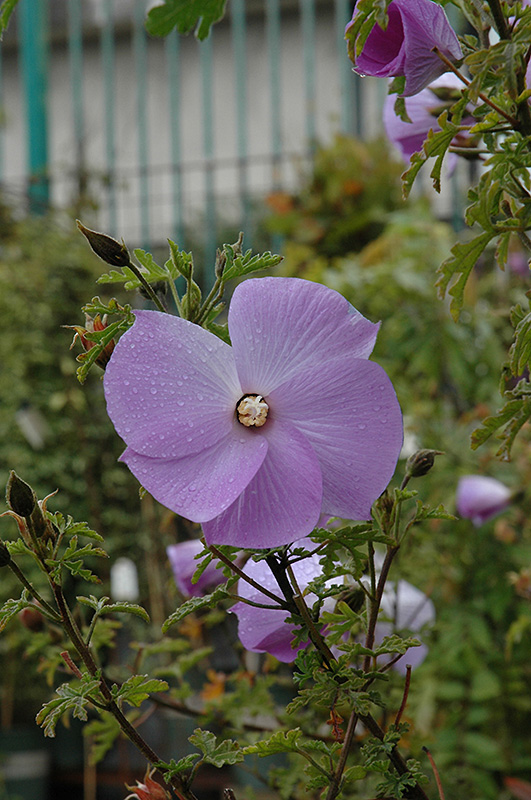Santa Cruz Lilac Hibiscus
Description
A prolific bloomer presenting large lilac-blue flowers all season, heaviest in spring; a perfect evergreen shrub for containers, borders, or as a hedge in warmer climates; an interesting summer annual in colder zones
Landscape Attributes
Santa Cruz Lilac Hibiscus is a multi-stemmed annual with an upright spreading habit of growth. Its medium texture blends into the garden, but can always be balanced by a couple of finer or coarser plants for an effective composition.
Santa Cruz Lilac Hibiscus is recommended for the following landscape applications;
Planting & Growing
Santa Cruz Lilac Hibiscus will grow to be about 8 feet tall at maturity, with a spread of 6 feet. Although it's not a true annual, this plant can be expected to behave as an annual in our climate if left outdoors over the winter, usually needing replacement the following year. As such, gardeners should take into consideration that it will perform differently than it would in its native habitat.
This plant does best in full sun to partial shade. It prefers to grow in average to moist conditions, and shouldn't be allowed to dry out. It is not particular as to soil type or pH. It is somewhat tolerant of urban pollution. Consider applying a thick mulch around the root zone in both summer and winter to conserve soil moisture and protect it in exposed locations or colder microclimates. This is a selected variety of a species not originally from North America.
Santa Cruz Lilac Hibiscus is a fine choice for the garden, but it is also a good selection for planting in outdoor pots and containers. With its upright habit of growth, it is best suited for use as a 'thriller' in the 'spiller-thriller-filler' container combination; plant it near the center of the pot, surrounded by smaller plants and those that spill over the edges. It is even sizeable enough that it can be grown alone in a suitable container. Note that when growing plants in outdoor containers and baskets, they may require more frequent waterings than they would in the yard or garden.

